We have a Windows Service application that can accept command line parameters like:
MyService -option
So far, when we want to start the service with a parameter, we either do it manually from the Service Properties dialog (in the Start parameters box) or with the command
sc start MyService -option
What we would like is a way to install the service "permanently" with this parameter, so that the users would just have to start/stop it without having to set the parameter each time.
BTW, adding the parameter in the ImagePath registry entry doesn't work, neither does installing like this:
MyService -option /install
Updated: Thank you for the answers so far which help me refine the question.
What I'd like to achieve is to set the parameter at the Service level itself (like with the properties) in case there are more than 1 service in the same executable. The binpath config option is merely updating the ImagePath entry in the registry. That cannot be service specific.
